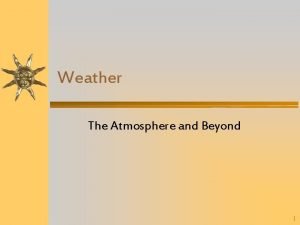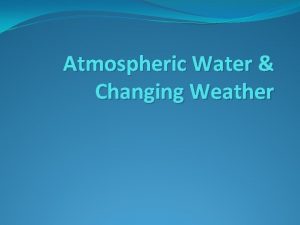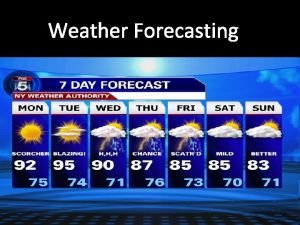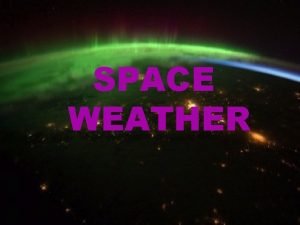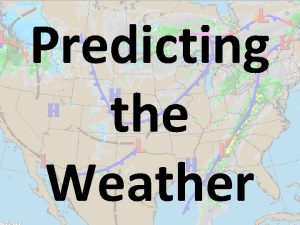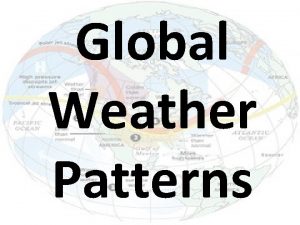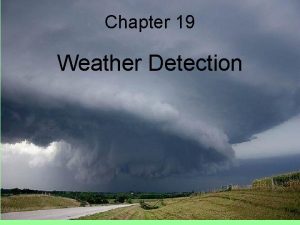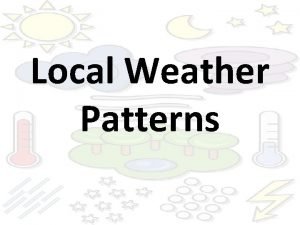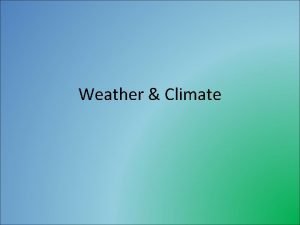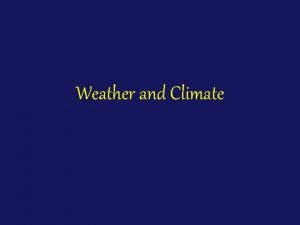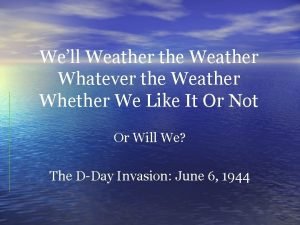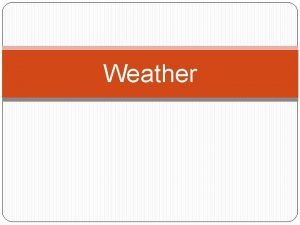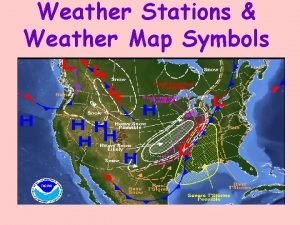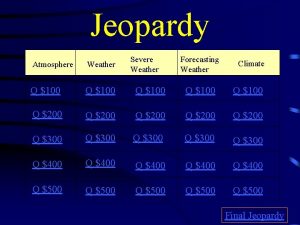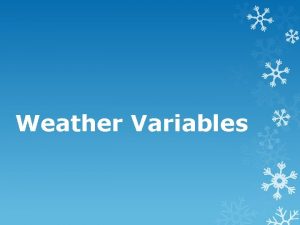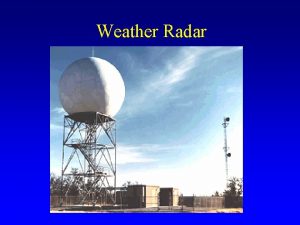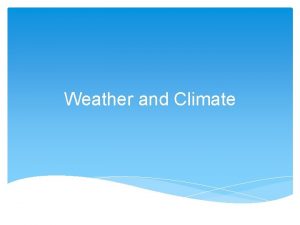AIM Why does the weather change How does




























- Slides: 28

AIM: Why does the weather change?

How does an air mass form? • Air Mass: a large body of air with similar characteristics of temperature, air pressure, and humidity. • Air masses form when air is stationary over a part of Earth’s surface and acquires characteristics of that surface (source region). – Forms over water: Moist – Forms over land: Dry – Forms in the tropics: Warm – Forms in polar regions: Cold

For example… • If the source region is the gulf of Mexico and the air comes to Long Island… – It will feel warm and moist to us • If it comes from central Canada… – It will feel cold and dry to us

Cool & moist Cool and Moist Cool & Dry Warm & Moist Cool and Moist Warm & Moist

What are Fronts? • Air masses do not stay in one place. Prevailing winds can move them around. • Front: the boundary between two air masses. • Changes in weather occur when a front passes over you.

• When one air mass catches up to another, the warmer air is less dense, and is forced to rise. – Results in unstable conditions and precipitation.

Types of Fronts 1. Warm Front: a warm air mass catches up to a cold (dense) air mass, and rises over it. • The warm air cools as it rises, causing water vapor to condense. • Condensation forms clouds and rain. • Gentle rain for a long period of time. • After the warm front passes, weather becomes warm and humid.


Types of Fronts 2. Cold Front: a cold air mass catches up to a warm (less dense) air mass, and pushes warm air up. • Heavy rain/storms for a short period of time. • After the cold front passes, weather becomes clear and colder. animation


Rain will fall ahead of the warm front and right on top of the cold front.

Types of Fronts 3. Occluded Front: when a cold front overtakes a warm front. • Long period of gentle rain followed by heavy rain / storm


Types of Fronts 4. Stationary Front: two air masses remain in the same positions. • Clouds and rain stay over the area for several days.


Weather Prediction • Scientists who study weather (meteorologists) use the movement of highs and lows to get clues about how the weather will change. • Why are accurate weather predictions important?


Radar • RAdio Detection And Ranging • Reflects radio waves off the precipitation and cloud aerosols(dust). • Reveals distance and intensity of storms By the late afternoon of February 5, 2008, tornadic supercells (storms with rotating updrafts) were followed by a squall line along the front. . . with strong to damaging winds.


Weather Satellites • Provides visual and infrared images of storm systems since the 1960 s. Modern weather satellites typically have solar cells for power, cameras for visual and infrared images, and a radio antenna for communications with Earth’s surface.






Weather Maps and Station Models • Synoptic weather map: a map summarizing weather variables for a short period of time. – Uses symbols to save space • Station model: the symbols that indicate a site’s weather variables for a specific time of day.

Cloud Cover Temperature 76 Current Weather . . Barometric Trend Practice 138 Wind Direction & Speed -30 Barometric Pressure

 Why why why why
Why why why why Why do weather change
Why do weather change How does the weather change in to kill a mockingbird
How does the weather change in to kill a mockingbird Why does low air pressure usually indicate stormy weather
Why does low air pressure usually indicate stormy weather When does a physical change occur study jams
When does a physical change occur study jams Study jams physical and chemical changes
Study jams physical and chemical changes Dont ask why why why
Dont ask why why why Station model symbol
Station model symbol Whether the weather poem
Whether the weather poem Clothes poem
Clothes poem Its stormy
Its stormy Whether the weather is fine or whether the weather is not
Whether the weather is fine or whether the weather is not Heavy weather by weather report
Heavy weather by weather report Capital weather gang weather wall
Capital weather gang weather wall Chapter 6 summary great gatsby
Chapter 6 summary great gatsby Why does george wilson lock myrtle in the bedroom
Why does george wilson lock myrtle in the bedroom Does the table represent a function why or why not
Does the table represent a function why or why not What does the image represent
What does the image represent Hình ảnh bộ gõ cơ thể búng tay
Hình ảnh bộ gõ cơ thể búng tay Lp html
Lp html Bổ thể
Bổ thể Tỉ lệ cơ thể trẻ em
Tỉ lệ cơ thể trẻ em Gấu đi như thế nào
Gấu đi như thế nào Glasgow thang điểm
Glasgow thang điểm Chúa sống lại
Chúa sống lại Môn thể thao bắt đầu bằng chữ f
Môn thể thao bắt đầu bằng chữ f Thế nào là hệ số cao nhất
Thế nào là hệ số cao nhất Các châu lục và đại dương trên thế giới
Các châu lục và đại dương trên thế giới Công thức tiính động năng
Công thức tiính động năng



